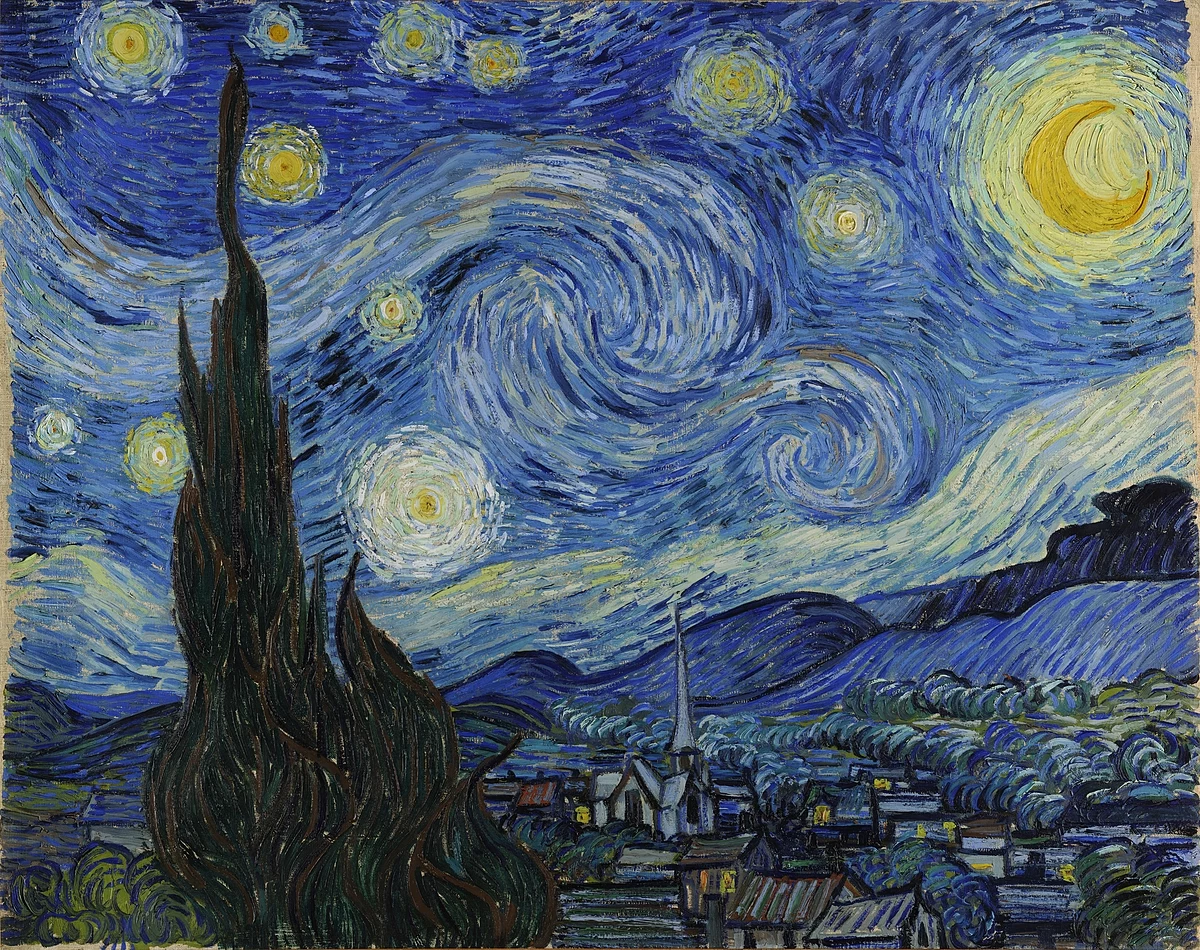
When someone remembers a song, they often recall the prominent part, the melody. It is what people may find themselves singing, and it feels natural to do so. What may not always be immediately remembered are the other notes which are happening in addition to the melody. These lines (or instruments) harmonize with the melody, and it may not be readily apparent what these other parts contribute to the overall song.
Many listeners are inadvertently aware of harmony, but rather than hear it, perhaps it is more accurate to say that they sense it. It could be the individual tone colors of the different instruments which are familiar. One aspect is certain: without it, the music would lack something substantive.
Picture Vincent van Gogh’s painting, The Starry Night. What is looming in the foreground? A prominent, cypress tree and behind it, scattered houses and a church. Taken out of context, the tree and the buildings alone wouldn’t necessarily draw acute interest from viewers. Add a host of stars, the moon, the shining beam of the planet Venus, all receding into the background, and now there is context: the atmosphere of a town asleep under an awoken night sky.

Consider, too, a familiar musical work: Samuel Barber’s Adagio for Strings. The thread of the melody courses throughout, giving each section of the strings an opportunity to be prominent in the texture. The other sections continue sustaining slower notes underneath, providing a foundation for the mood.
It is the layers of the non-melodic string notes which give a perceived depth and richness to the ensemble sound. When the notes align vertically, they create chords. Depending upon which notes are played simultaneously, they may sound consonant (stable and harmonious) or dissonant (a clashing, unsettling sound)
The journey manifests itself as a series of building dissonances and their resolution. When a final statement of the Adagio is reached, concluding the piece, we hear a chord left unresolved, leading us to feel that the journey is somehow unfinished.
One aspect of composition which musicians admire is which instrumental colors are selected to provide the notes of a given dissonant or consonant chord - the study of this art is known as orchestration. String instruments are viewed as closest to the human voice and perhaps this is why Barber’s Adagio can immediately resonate with listeners.
Harmony, in short, is a way to emotionally guide the listener through a piece. We sense it before we see it. The melody can be considered a sort of chartered route, with the harmonic language being the surrounding environment along the journey. The compass is aligned with the specified key, a select collection of notes (forming a specific scale).
Think of a song you especially enjoy listening to. Can you think of the melody? Which instruments/voices are used? Now, what other instrumental colors are used to create the harmony. How do they determine the mood and guide you as you listen? What would be missing if they were absent?